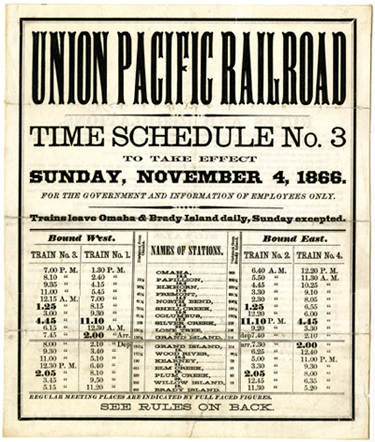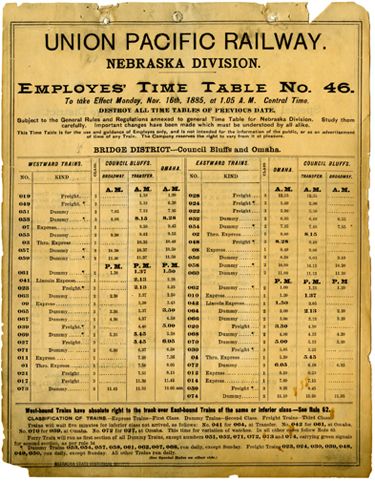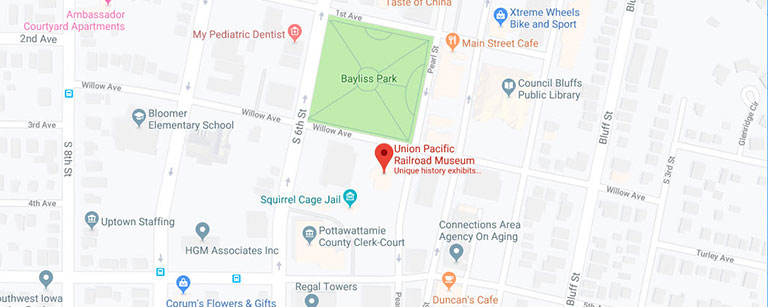On Track and On Time: Employee Timetables

Timetables are some of the most important historical documents created by the railroad. They were designed to help station agents, employees and passengers know when a train should be departing and arriving. To ensure employees knew which trains should be stopping at their stations; timetables are set up in columns.
Here's what each column means:
- The number at the top of each column represents the type of train.
- The columns on either side of the center are the times that the westbound or eastbound train will arrive at each station.
- The center column represents where the train will be arriving or departing.
The Union Pacific collection includes a large amount of employee timetables dating back to 1866. Over time these timetables contained more complex information. Station lists began to become regional instead of branch-specific. Public timetables, for passenger traffic, started to contain additional information, information including tourist spots and advertisements for railroad technology advancements.

Historic timetables are interesting for many reasons, but perhaps the most engaging aspect is that they are a tangible link between railroad operations and the hundreds of employees who insured that they arrived safely over thousands of miles of track. Railroad operations have certainly changed over time, but these documents illustrate the basic tenant of rail transportation that has endured: insuring that precious cargo arrives safely and on time.

